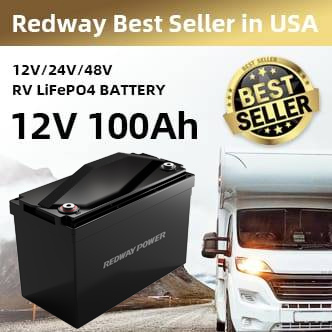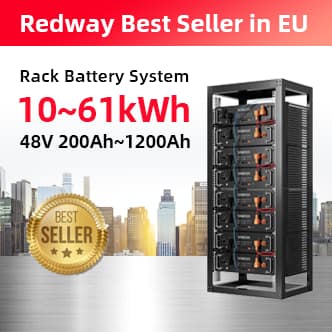Forklift batteries are the powerhouse behind material handling operations, with weights ranging from 1,000 to 4,000 pounds depending on critical factors like voltage, capacity, and chemistry. Understanding these variables ensures optimal forklift performance, safety, and cost-efficiency. This guide breaks down the science behind battery weight, compares lead-acid and lithium-ion technologies, and provides actionable insights for selecting and maintaining the right battery for your needs.
What Determines Forklift Battery Weight?
Three primary factors dictate forklift battery weight: voltage, capacity, and chemistry. Higher voltage systems require more cells or thicker lead plates—a 48V battery, for example, weighs significantly more than a 24V counterpart. Capacity, measured in amp-hours (Ah), also plays a role: a 750Ah lead-acid battery can weigh 800 lbs more than a 500Ah model due to added lead content. Chemistry is the game-changer: lithium-ion batteries use lightweight lithium compounds instead of dense lead, slashing weight by 30–50% while boosting energy density.
| Voltage | Chemistry | Average Weight | Best For |
|---|---|---|---|
| 24V | Lead-Acid | 1,500–2,000 lbs | Class III walk-behind forklifts |
| 36V | Lead-Acid | 2,200–2,800 lbs | Class I electric rider trucks |
| 48V | Lithium-Ion | 1,000–1,400 lbs | Multi-shift warehouse operations |
For instance, a 48V lithium-ion battery weighing 1,200 lbs can replace a 2,500-lb lead-acid unit, freeing up 1,300 lbs of cargo capacity. This weight reduction is critical for operations prioritizing speed and maneuverability, such as e-commerce fulfillment centers with narrow aisles.
Lead-Acid vs. Lithium-Ion: A Weight Comparison
Lead-acid batteries dominate 70% of the market due to their low upfront cost, but their weight comes at a hidden price. A typical 36V lead-acid battery contains over 1,000 lbs of lead plates submerged in sulfuric acid, requiring reinforced forklift frames and frequent water refills. In contrast, lithium-ion batteries use compact, modular cells that reduce weight while delivering 2–3x faster charging and 30% longer runtime per cycle.
“Lithium-ion adoption is accelerating in material handling,” says a Redway Power expert. “Operators gain 2–3 hours of additional runtime per charge versus lead-acid, with 10-year lifespans doubling traditional options. However, facilities must invest in training to mitigate risks associated with high-voltage systems.”
Why Battery Weight Impacts Forklift Performance
Battery weight is a double-edged sword. On one hand, it stabilizes forklifts by lowering the center of gravity—critical when lifting 5,000-lb pallets to 30-foot heights. On the other, excessive weight reduces acceleration, strains motors, and increases tire wear. Lithium-ion strikes a balance: its lighter design allows faster travel speeds (up to 12 mph vs. 8 mph for lead-acid models) while maintaining stability through intelligent weight distribution.
Key Performance Considerations:
- Maneuverability: Lithium-ion-powered forklifts make tighter turns in narrow aisles.
- Energy Efficiency: Lithium-ion loses only 5% charge monthly vs. 30% for lead-acid.
- Cold Storage: Lithium-ion maintains 95% capacity at -4°F, unlike lead-acid, which loses 50% efficiency.
Choosing the Right Battery: 5-Step Checklist
Selecting the optimal battery involves aligning technical specs with operational needs:
- Check OEM Specifications: Match voltage and capacity to your forklift’s requirements.
- Evaluate Shift Patterns: Lithium-ion suits 3-shift operations with opportunity charging.
- Assess Infrastructure: Lead-acid needs ventilation and watering systems; lithium-ion requires compatible chargers.
- Calculate Total Cost: Lithium-ion’s 10-year lifespan often beats lead-acid’s 5-year cycle despite higher upfront costs.
- Consider Weight Limits: A 4,000-lb battery may overload smaller Class II forklifts designed for 2,500-lb max.
| Forklift Class | Typical Use Case | Ideal Battery Weight | Cost Range |
|---|---|---|---|
| Class I | Warehouse lifting | 2,000–3,000 lbs | $2,500–$6,000 |
| Class II | Narrow aisle operations | 800–1,500 lbs | $4,000–$10,000 |
| Class III | Loading docks | 1,000–1,800 lbs | $3,000–$8,000 |
Retrofitting Existing Forklifts for Lithium-Ion
Switching to lithium-ion isn’t plug-and-play but offers long-term gains. Key steps include:
- Compartment Modifications: Lithium-ion’s compact size may require spacer kits.
- Electrical Updates: Install voltage regulators to prevent overcharging.
- Staff Training: Teach proper charging protocols (lithium-ion hates 100% charges).
Though retrofitting costs $1,500–$5,000 per forklift, facilities report 18-month payback periods through reduced energy and maintenance costs.
Pro Maintenance Tips for Maximum Lifespan
Lead-Acid Batteries:
- Check water levels weekly—keep plates submerged
- Equalize charges monthly to prevent sulfation
- Never discharge below 20%
Lithium-Ion Batteries:
- Maintain 20–80% charge cycles
- Store at 59°F (15°C) when idle
- Use manufacturer-specified chargers
FAQ: Forklift Battery Weight Demystified
- Q: How does battery weight affect rental costs?
- A: Heavy lead-acid batteries may add $50–$150/month in transport fees. Lithium-ion’s durability often waives these costs long-term.
- Q: Can I use lithium-ion in older forklifts?
- A: Yes, but consult an expert—some 1990s models need wiring upgrades to handle lithium-ion’s BMS (Battery Management System).
- Q: What’s the lightest battery for small spaces?
- A>Class III forklifts thrive with 800-lb lithium packs, saving 40% floor space vs. lead-acid.
By matching battery weight to your operational needs, you’ll optimize costs, efficiency, and forklift longevity. Lithium-ion’s rise signals a shift toward smarter, lighter energy solutions—but always crunch the numbers to see if the switch makes sense for your facility.



